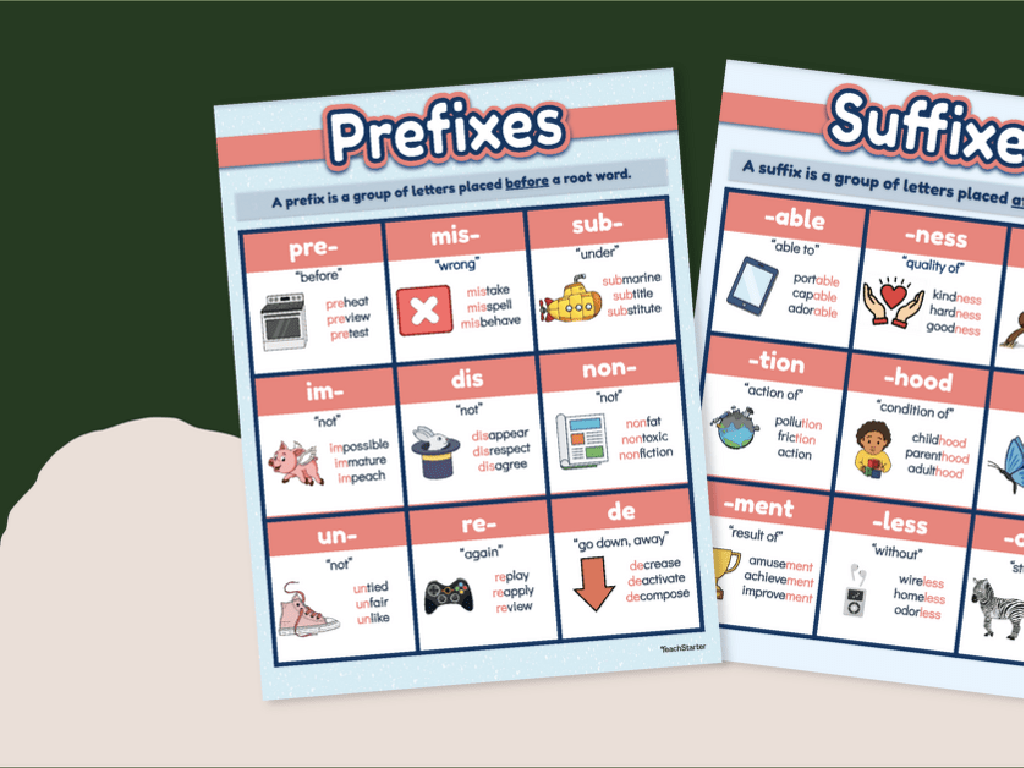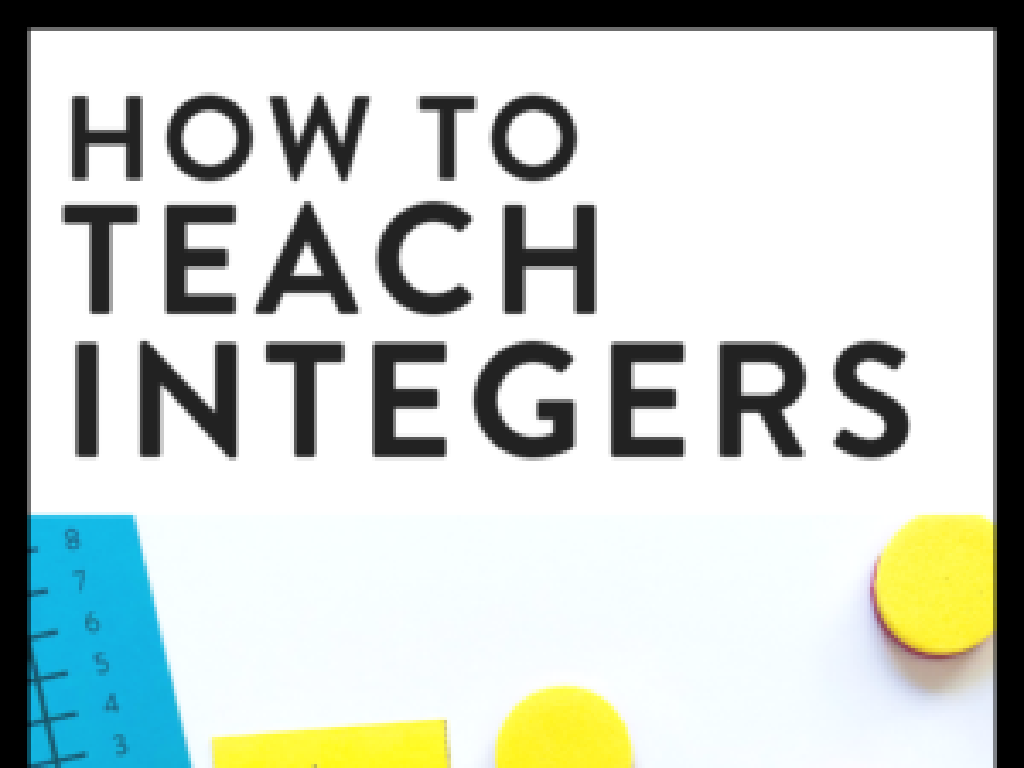Read Sight Words Set 8: Fast, Good, Him, Take, Will
Subject: Language arts
Grade: First grade
Topic: Sight Words
Please LOG IN to download the presentation. Access is available to registered users only.
View More Content
Welcome to Sight Words!
– Sight words are common words
– They help us read smoothly
– Today’s words: fast, good, him, take, will
– ‘Fast’ as in ‘He runs fast’, ‘good’ as in ‘The food tastes good’
– Practice makes perfect
– We’ll use games and activities to remember these words
|
This slide introduces the concept of sight words to first graders, emphasizing their importance in achieving reading fluency. Sight words are frequently encountered in text and may not always follow standard phonetic rules, making them essential to recognize on sight. Today’s focus is on the words: fast, good, him, take, will. Use engaging methods like flashcards, matching games, and sentence creation to reinforce these words. Encourage students to spot these words in their favorite books or during read-aloud sessions. The goal is for students to instantly recognize these words to improve their reading speed and comprehension.
Exploring Sight Words Set 8
– What are sight words?
– Common words seen daily that don’t always follow usual phonetic rules.
– Recognize words instantly
– Importance in reading fluency
– Helps to read faster as we don’t need to sound out each letter.
– Practice with set 8 words
– Words: fast, good, him, take, will. Use them in sentences.
|
This slide introduces the concept of sight words to first graders, emphasizing their role in developing reading fluency. Sight words are common words that often don’t follow standard decoding rules, making them tricky for early readers. By recognizing these words on sight, students can read more smoothly and with better comprehension. Encourage students to memorize set 8 sight words: fast, good, him, take, will. Provide examples and use them in sentences to illustrate their meaning and usage. During the lesson, engage the students with activities where they can practice identifying these words in texts and use them in their own writing.
Sight Word: Fast
– ‘Fast’ means moving quickly
– Example: ‘The cheetah runs fast’
– Use ‘fast’ to describe something speedy
– Group repetition: ‘Let’s say it together!’
– Encourage the class to say ‘fast’ in unison
– Practice using ‘fast’ in a sentence
– Ask students to make up their own sentences
|
The focus of this slide is to teach the sight word ‘fast’ by providing a definition, an example, and engaging the class in group repetition. Emphasize the meaning of ‘fast’ by discussing things that move quickly, like a cheetah. After saying the word ‘fast’ together, encourage the students to come up with sentences where they use the word ‘fast’. This could be anything from ‘I run fast at the park’ to ‘The car drives fast on the road’. This activity helps reinforce the word’s meaning and proper usage in everyday language, aiding in the retention of the sight word.
Sight Word: Good
– ‘Good’ means nice or well done
– Example: ‘Good job cleaning up!’
– Praise something done well: ‘The food tastes good.’
– Practice saying: ‘good’
– Repeat the word to remember it
– Use ‘good’ in our sentences
– Try making a sentence with ‘good’
|
The word ‘good’ is an adjective that we use to describe something positive. It’s a common word that first graders will often hear and use. Start by explaining the meaning and then give an example that they can relate to, such as praising them for tidying up. Have the class repeat the word ‘good’ aloud together to practice pronunciation. Encourage the students to use the word ‘good’ in their own sentences, and ask for volunteers to share their sentences with the class. This will help them understand the context in which ‘good’ can be used and remember it better.
Sight Word Practice: ‘him’
– ‘him’ refers to a boy or man
– Example sentence using ‘him’
– ‘Give the ball to him.’ – ‘him’ is used to show who gets the ball
– Practice saying the word
– Repeat the word ‘him’ as a class to practice pronunciation
– Understanding when to use ‘him’
– Use ‘him’ instead of a boy’s or man’s name
|
The word ‘him’ is a pronoun that replaces the name of a male person or animal in a sentence. It is important for students to recognize and use this word correctly in context. Start by explaining the meaning of ‘him’ with simple definitions. Provide a clear example where ‘him’ is used in a sentence, and then practice saying the word aloud as a class to reinforce pronunciation. Finally, discuss with students how ‘him’ can be used in place of someone’s name to avoid repetition and how it is often used after a verb or preposition. Encourage students to come up with their own sentences using ‘him’ and to listen for the word in conversations and stories.
Sight Word: Take
– ‘Take’ means to grab or carry
– Think of taking your lunch to school
– Example: ‘Please take your book’
– Use ‘take’ when you move something to another place
– Everyone say it: ‘take’
|
The word ‘take’ is a common action word that first graders will often encounter in instructions and daily conversation. It’s important to demonstrate the action of taking something to help solidify the meaning. Use the example sentence to show ‘take’ in context. Have the students repeat the word ‘take’ after you to practice pronunciation. Encourage them to come up with their own sentences using ‘take’ and to act out the action of taking something. This kinesthetic activity will help them remember the word and its meaning.
Sight Word: Will
– ‘Will’ refers to the future
– It’s used when talking about things that haven’t happened yet
– Example: ‘I will go to the park’
– Use ‘will’ to talk about plans or promises
– Practice saying: ‘will’
– Repeat after me: ‘will’, ‘will’, ‘will’
|
The word ‘will’ is an important sight word that helps describe future actions or events. It’s a modal verb often used with a base verb to indicate future tense. When teaching ‘will’, emphasize its use in sentences that talk about future plans, promises, or decisions made at the moment of speaking. Have the students practice saying ‘will’ in chorus and then individually. Encourage them to come up with their own sentences using ‘will’ to describe something they plan to do. This will help them understand the context in which ‘will’ is used and remember it as part of their sight word vocabulary.
Practice Time: Sight Words Fun!
– Match words to pictures
– Connect ‘fast’, ‘good’, ‘him’, ‘take’, ‘will’ to correct images
– Use words in sentences
– Create a sentence for each sight word
– Spot the word ‘fast’ around us
– Look around the classroom for ‘fast’
– Share your findings with the class
|
This slide is designed for an interactive class activity to reinforce the recognition and understanding of sight words set 8. Start by having students match each sight word to an appropriate picture that represents the meaning of the word. Then, encourage them to use each sight word in a unique sentence, which can be written or spoken. For a fun classroom hunt, ask the students to find objects or pictures in the classroom that relate to the word ‘fast’. This could be a picture of a fast animal or a car. Lastly, have students share their sentences and findings with the class to foster a collaborative learning environment. This activity will help solidify their grasp of the sight words through practical application.
Let’s Play Sight Word Bingo!
– We’re playing Sight Word Bingo
– Listen for sight words: fast, good, him, take, will
– Words like ‘fast’ and ‘good’ are our game’s stars
– Cover the word on your board when heard
– Use markers or stickers as covers
– Shout ‘Bingo!’ when all words are covered
– Be attentive and quick to win the game
|
This slide introduces a fun classroom activity to help first graders recognize and remember sight words. Sight Word Bingo is an interactive game that encourages listening and quick thinking. Each student will have a bingo card with a set of sight words. As the teacher calls out words randomly, students must identify and cover the corresponding word on their board. The first student to cover all their words and shout ‘Bingo!’ wins. Prepare bingo cards in advance, ensure each student understands the rules, and consider small prizes for winners to motivate participation. Rotate through several rounds to give all students a chance to win and reinforce the sight words.
Class Activity: Sight Word Hunt
– Explore the classroom on a word hunt
– Match objects to sight words
– Find something ‘fast’, or a ‘good’ object
– Team up to read words together
– Pair up and practice reading ‘him’, ‘take’, ‘will’
– Enjoy learning and helping friends
|
This interactive activity is designed to engage first graders in learning sight words by associating them with objects in their environment. Set up the classroom with various objects labeled with the sight words ‘fast’, ‘good’, ‘him’, ‘take’, and ‘will’. Encourage students to work in pairs or small groups to find these objects and read the words aloud. This will not only help with word recognition but also foster teamwork and cooperative learning. As they find each object, have them say the word and use it in a sentence. For example, ‘I can run fast’, or ‘This book is good’. Provide guidance and support as needed, and ensure that each child has a chance to participate and practice the words.






